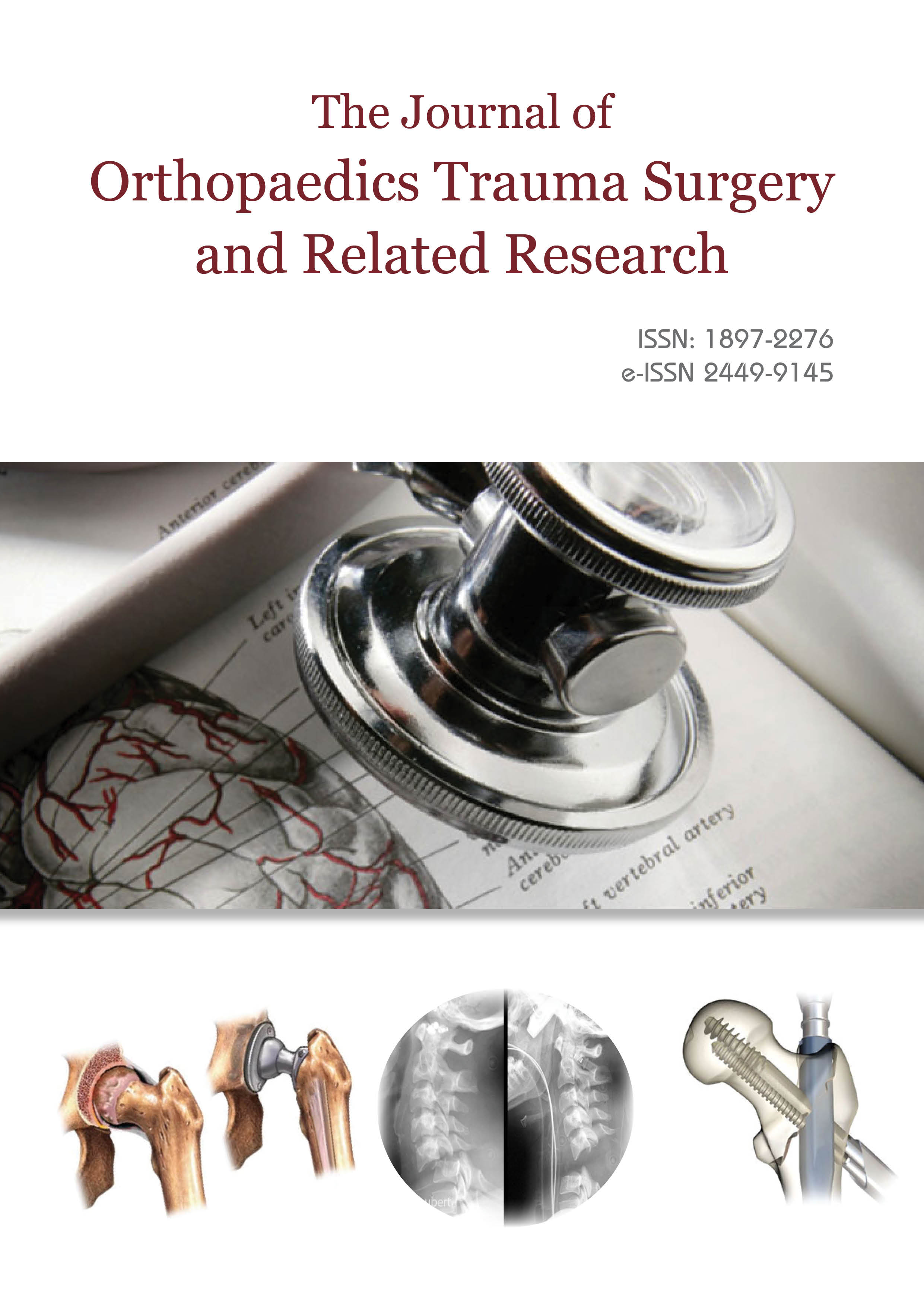Journal of Orthopaedics Trauma Surgery and Related Research

An Official Journal of Polish Society of Orthopaedics and Traumatology
ISSN:1897-2276
e-ISSN: 2449-9145

An Official Journal of Polish Society of Orthopaedics and Traumatology
ISSN:1897-2276
e-ISSN: 2449-9145
Background: Pelvic fractures are relatively frequent injuries that can range in severity from minor, isolated bone fragments to complex disruptions of the pelvic ring. The aim of this work was to study the prognosis of pelvic fractures in the orthopedic department. Methods: We conducted a retrospective, descriptive, monocentric study over a period of five years. The study included a total of 194 cases: 150 hospitalized patients diagnosed with pelvic fractures and 44 deceased individuals with pelvic fractures identified upon admission to the mortuary. The study population was predominantly male (n=105), with females accounting for 45 cases. The mean age was 40.22 years, indicating a higher incidence among young adults. Radiological assessment of the fractures was performed using Tile’s classification system, with type A fractures being the most frequently observed. The prognosis of pelvic fractures was evaluated based on mortality rates, the occurrence of complications, and the presence of long-term sequel. Results: Mortality was observed in 20% of the cases (n=30), with lifeless body deposits being the most frequent cause, accounting for 18%. Among patients who arrived at the facility alive, the highest mortality rate occurred within the first 24 hours (12%), after which the death rat gradually decreased over time. Autopsies were conducted in all fatal cases, revealing that 35% of deaths were due to severe multi-trauma, while 3% resulted from pulmonary embolism. In cases involving severe trauma that led to death, cranial injuries accounted for 11%, thoracic contusions for 16%, abdominal contusions for 7%, pelvic vascular injuries for 13%, and lower limb fractures for another 13%. Complications were primarily vascular injuries (13%), followed by urinary system injuries (8%). Open wounds were present in 5% of patients. Vascular complications were most common in type C injuries (8%), with a statistically significant link between lesion type and vascular issues (p=0.002). All urinary complications (8%) were associated with injuries to the anterior arch. Specifically, isolated anterior arch injuries caused 4% of urethral ruptures and 2% of bladder ruptures. Conclusion: The prognosis of pelvic fractures in our setting is marked by a high early mortality rate. This elevated mortality is primarily attributable to immediate life-threatening complications and associated injuries that result in multi-trauma.
Select your language of interest to view the total content in your interested language
 Journal of Orthopaedics Trauma Surgery and Related Research a publication of Polish Society, is a peer-reviewed online journal with quaterly print on demand compilation of issues published.
Journal of Orthopaedics Trauma Surgery and Related Research a publication of Polish Society, is a peer-reviewed online journal with quaterly print on demand compilation of issues published.